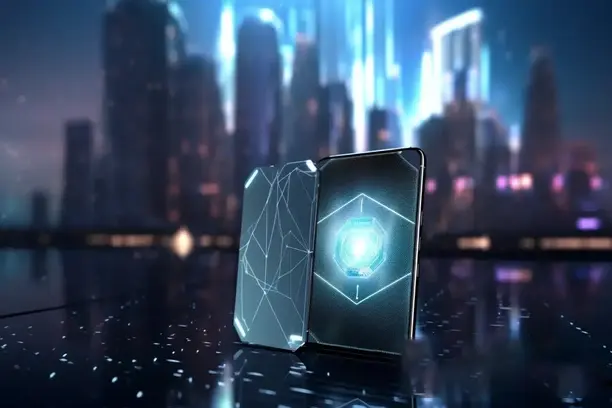Cryptocurrency mining is a process closely related to the virtual currency ecosystem, and may be slightly complicated for beginners. Simply put, mining is the process of utilizing the computing power of a computer to solve a specific mathematical problem in order to add new transactions to the blockchain network and receive the corresponding cryptocurrency rewards. With the rise in popularity of cryptocurrencies such as Bitcoin and Ether, mining has become a hot topic, attracting a large number of people to participate in it.

What is cryptocurrency mining?
Cryptocurrency mining, simply put, is the process of using a computer's arithmetic power to solve a series of complex mathematical problems in order to add new blocks to the blockchain and obtain the corresponding cryptocurrency. The process is similar to a global competition in which participants need to use their computers to solve a series of complex mathematical problems and get the correct answer in order to receive the virtual currency distributed on the blockchain network. Mining is not only the main way to issue new coins, but also an important process to keep the blockchain network running and to ensure the security of transactions.
In the world of Bitcoin, this process is called Proof of Work (PoW). In this way, the entire blockchain system remains decentralized and protected from fraud. Other cryptocurrencies, such as Ether and Litecoin, are also mined, but the consensus mechanism behind them may be different.
Why do I need to mine?
The importance of cryptocurrency mining lies in the fact that it is not only a way of issuing new coins, but also ensures the security and stability of the blockchain network. Blockchain is a decentralized, decentralized ledger technology where there is no central authority to control transactions and records. This requires miners to use their computing power to validate transactions and package them into blocks. When a miner successfully solves a problem and adds a new block, they are rewarded by the blockchain network (i.e. a newly generated cryptocurrency).
Mining also prevents double payments. Since each transaction is verified by multiple miners, it becomes extremely difficult for a dishonest participant to tamper with the transaction record. This is one of the core security features of the blockchain network.
Core Concepts of Cryptocurrency Mining
The most important concepts in cryptocurrency mining are arithmetic power and the consensus mechanism of the blockchain. Arithmetic power is a measure of the computing power of a mining device. The higher the arithmetic power, the greater the chance of successfully mining a block. For Bitcoin, this is done through Proof of Work (PoW), where miners use their own computing resources to solve a specific hash problem.
Hash problems are complex mathematical operations, and the process of answering them requires a large amount of computation. Because these questions are random, it is impossible to predict the correct answer, so miners can only rely on "trial and error" to find the answer. Each block of hash problems has a specific difficulty level, with more and more miners to participate, the difficulty of the problem will also increase.

Cryptocurrency Mining Equipment
Cryptocurrency mining is not easy for everyone to participate in, as it requires efficient hardware equipment to perform the operations. Initially, mining cryptocurrencies such as Bitcoin could be done on ordinary personal computers, but as mining has become more and more difficult, most miners now use specially designed hardware devices called ASIC miners (Application-Specific Integrated Circuit). These devices have extremely high computing efficiency, but are expensive and consume a lot of power.
In addition to ASIC miners, there is a class of devices called GPU miners (graphics card-based miners) that are commonly used to mine non-bitcoin cryptocurrencies such as ethereum.GPU miners are cheaper and more flexible than ASIC miners, but they are less efficient.
However, whether it is ASIC or GPU miners, the power consumption required for mining is very high, which makes mining an industry that requires a large investment taking into account the cost of power.
Mining Rewards and Block Rewards
Every time a miner successfully solves a block hash problem and adds it to the blockchain, they receive a block credit. In the case of Bitcoin, for example, the current reward for each successfully mined block is 6.25 Bitcoin, but this number decreases over time, with a "halving of block rewards" event occurring every four years. The purpose of this is to simulate scarcity and keep the inflation rate of Bitcoin low.
Miners also receive rewards from transaction fees. Whenever a user makes a transaction, they pay a transaction fee, which is allocated to the miner responsible for validating the transaction.
Challenges and Risks of Mining
While cryptocurrency mining may seem like a great opportunity to make money, it actually comes with many challenges and risks. Mining requires a large initial investment, including purchasing hardware and paying high electricity bills. In some areas, the cost of electricity for mining may even exceed the profitability of the miners.
As blockchain develops, the difficulty of mining will continue to increase, meaning that miners will have to constantly upgrade their equipment in order to remain competitive in mining. Not only does this require additional financial outlay, but it may also make it impossible for some smaller miners to keep up with the trend and exit the market.
Government policy risk is also a major issue in mining. As global regulation of cryptocurrencies continues to tighten, certain countries have banned or restricted cryptocurrency mining, creating additional uncertainty for miners.
How to start cryptocurrency mining?
For users interested in cryptocurrency mining, the first thing you need to do is to choose the right hardware equipment. Depending on the type of cryptocurrency you want to mine, you can choose either an ASIC miner or a GPU miner. It is also very important to choose a suitable mining pool, which is a cooperative system involving multiple miners to increase the efficiency of mining and distribute the rewards according to the amount of arithmetic power contributed.
To engage in cryptocurrency mining, you will also need to install the appropriate mining software and ensure that your network is stable in order to process transactions in a timely manner. Each cryptocurrency has its own specific mining software and setup method, so it is recommended to learn more about your chosen cryptocurrency and acquire the necessary knowledge before committing.
Conclusion
Cryptocurrency mining is a key process that supports the operation of blockchain networks and the issuance of new coins, and it is important for aspiring users to understand the core concepts, challenges and risks involved. With the development of technology and changes in the market, mining is no longer an easy activity for the average person to participate in, but it is still a potentially lucrative avenue for those who are able to overcome the obstacles and have the resources to do so. I hope this article will help you understand the core concepts and practical knowledge of cryptocurrency mining more clearly.














